Seminários
PRÓXIMOS
Neural Implicit Morphing of Face Images
Resumo: Face morphing is a problem in computer graphics with numerous artistic and forensic applications. It is challenging due to variations in pose, lighting, gender, and ethnicity. This task consists of a warping for feature alignment and a blending for a seamless transition between the warped images. We propose to leverage coord-based neural networks to represent such warpings and blendings of face images. The results of our experiments indicate that our method is competitive with both classical and generative models.
Grafos de isogenias de curvas elíticas
Resumo: Os grafos de isogenias de curvas elíticas são grafos cujos vértices são curvas elíticas e as arestas são isogenias de grau fixo entre as curvas. O interesse nesses grafos vem de aplicações a criptografia e de questões computacionais. Vou fazer uma exposição sobre o assunto e, se houver tempo, apresentar novos resultados para grafos de isogenias com estrutura de nível.
Coherent Structures and Lattice-Boltzmann Hydrodynamics in Turbulent Pipe Flows
Resumo: Coherent structures (CS) are known for being part of the foundations of turbulent flow dynamics. Their appearance was believed to be chaotic and unorganized for a long time. In the last two decades, however, it has been shown through numerical simulations and experiments that a high degree of organization of the CS could be assigned to the constitution of a turbulent state. Understanding these organizational dynamics is promising to bring valuable theoretical and applied predictions, such as the average lifetime of turbulent structures, the understanding of the role of CS in scale formation, and the development of fusion reactors. A statistical analysis of an experimental turbulent pipe flow database was carried out to investigate the aforementioned mechanisms, with the transition between the identified CS studied as a stochastic process, revealing a non-Markovian memory effect for the identified structures. In parallel, simulations with the Lattice Boltzmann Method (LBM) were performed to simulate the quasi-static regime in laminar magnetohydrodynamic flows and turbulent pipe flow. The investigation on the CS dynamics was also performed for the numerical data obtained with the LBM, revealing a non-trivial memory effect with the force that was used to trigger the turbulent state and a Markovian behavior for the finely time-resolved data, indicating that the experimental behavior could be recovered for larger datasets.
On linear convergence of iterative methods for the variational inequality problem
Resumo: In this review talk, we will discuss Paul Tseng's classical paper on linear convergence of some algorithms for variational inequalities (VIs). Namely, we will introduce extragradient, proximal point, and matrix splitting methods, and we intend to reiterate some results and proofs from the original paper. This theme is of great importance due to the wide applicability of VIs in optimization and equilibrium problems.
Degenerate twistor deformations of holomorphically symplectic manifolds
Resumo: Let $\pi:\; M\to X$ be a Lagrangian fibration on a holomorphically symplectic manifold. Adding a closed (1,1)-form to the holomorphic symplectic form $\Omega$, we obtain a holomorphic symplectic form on a complex deformation of $(M, \Omega)$. This deformation is called "degenerate twistor deformation". In the hyperkahler case the degenerate twistor deformation can be obtained as the limit of twistor deformations. A limit of a Kahler manifolds is not necessarily Kahler, and for many years it was unknown whether the degenerate twistor deformation of a compact hyperkahler manifold is Kahler. I will explain the construction of the degenerate twistor deformation and prove that it is Kahler, using the Harvey-Lawson duality criterion of Kahlerness. This is a joint work with Andrey Soldatenkov.
The coarse distance from dynamically convex to convex
Resumo: The Viterbo conjecture is one of the main open problems in symplectic topology. In its weakest form, it is a systolic type inequality relating the length of closed characteristics with the symplectic volume of a convex set. One of the difficulties of proving this conjecture is that convexity is not a symplectic invariant. Hofer-Wysocki-Zehnder found a symplectic condition that they named dynamical convexity that is satisfied by all convex sets and that is invariant by symplectomorphisms. It was an open question whether this notion was equivalent to convexity up to a symplectomorphism. In this talk, I will explain why these notions are not only different, but how we can find 4-dimensional dynamically convex domains that are arbitrarily far from convex domains in an appropriate distance.
Distribuições holomorfas com feixes tangentes totalmente decomponíveis
Resumo: Considere uma folheação holomorfa singular em um espaço projetivo complexo de dimensão maior ou igual a 3, com grau e dimensão da folheação determinados. No contexto da obtenção de algumas componentes irredutíveis dos espaços de tais folheações, é interessante em determinadas situações que uma pequena deformação de uma folheação com feixe tangente totalmente decomponível (split) tenha não somente feixe tangente localmente livre, mas que permaneça sendo totalmente decomponível. Surge então a pergunta: dada uma folheação qualquer com feixe tangente localmente livre, é verdade que também é totalmente decomponível? Recentemente, Daniele Faenzi, Marcos Jardim e Jean Vallès mostraram que, de maneira geral, a resposta à pergunta é negativa. No nosso trabalho, exploramos condições suficientes que garantam a decomponibilidade do feixe tangente quando ele é localmente livre. Mais especificamente, dada uma distribuição singular de dimensão 2 em um espaço projetivo complexo de dimensão maior ou igual a 3, fornecemos condições sobre uma subfolheação por curvas que garantam a existência de uma outra subfolheação por curvas e uma relação de decomponibilidade entre os respectivos feixes tangentes, tanto em caráter local quanto global. Como aplicação dos resultados obtidos, mostramos que se uma folheação de codimensão 1 em um espaço projetivo complexo de dimensão 3 possuir feixe tangente localmente livre e for tangente a um campo vetorial holomorfo não-trivial, então seu feixe tangente é totalmente decomponível. Alguns resultados de divisão de formas diferenciais holomorfas por campos holomorfos tangentes são também exibidos.
Neural Conjugate Flows: Physics-Informed Architectures with Differentiable Flow Structure
Resumo: We present Neural Conjugate Flows, a novel design for physics-informed neural networks with flow structure. We prove that this architecture is an universal approximator for solutions of differential equations and demonstrate how its group and topological lead to computational and theoretical gains when simulating dynamical systems with neural networks.
Data Science and Innovation
Resumo: Data science and innovation have become overloaded terms, leading to some confusion. To be successful, the innovation process involves not only inventions (e.g., new methods) but also context, e.g., user behavior and timing, e.g., market readiness. In this talk, I discuss the impact of data science on innovation, using selected success stories (some of which I was involved in). I also give hints to promote innovation within companies, in particular, using open innovation. Finally, I describe some innovations in the context of the Inria-Brasil partnership.
Category Theory applied to Data Visualization
Resumo: Category Theory (CT) is a branch of mathematics that studies general abstract structures through their relationships, and it is unmatched in its ability to organize and relate abstractions. In recent years, CT has found applications in a wide range of disciplines, such as chemistry, biology, natural language processing, and database theory. We present a novel application by formalizing Data Visualization within Category Theory. This formalization creates a bridge between Mathematics and Data Visualizations. Moreover, it provides a framework to express complex visualizations, which can be implemented computationally by leveraging the well-established connection between CT and Functional Programming.


